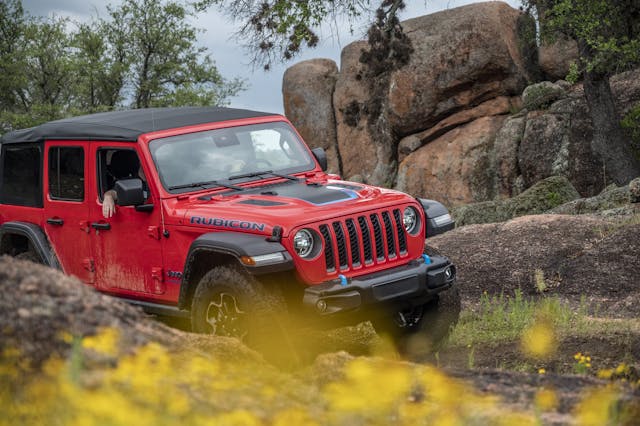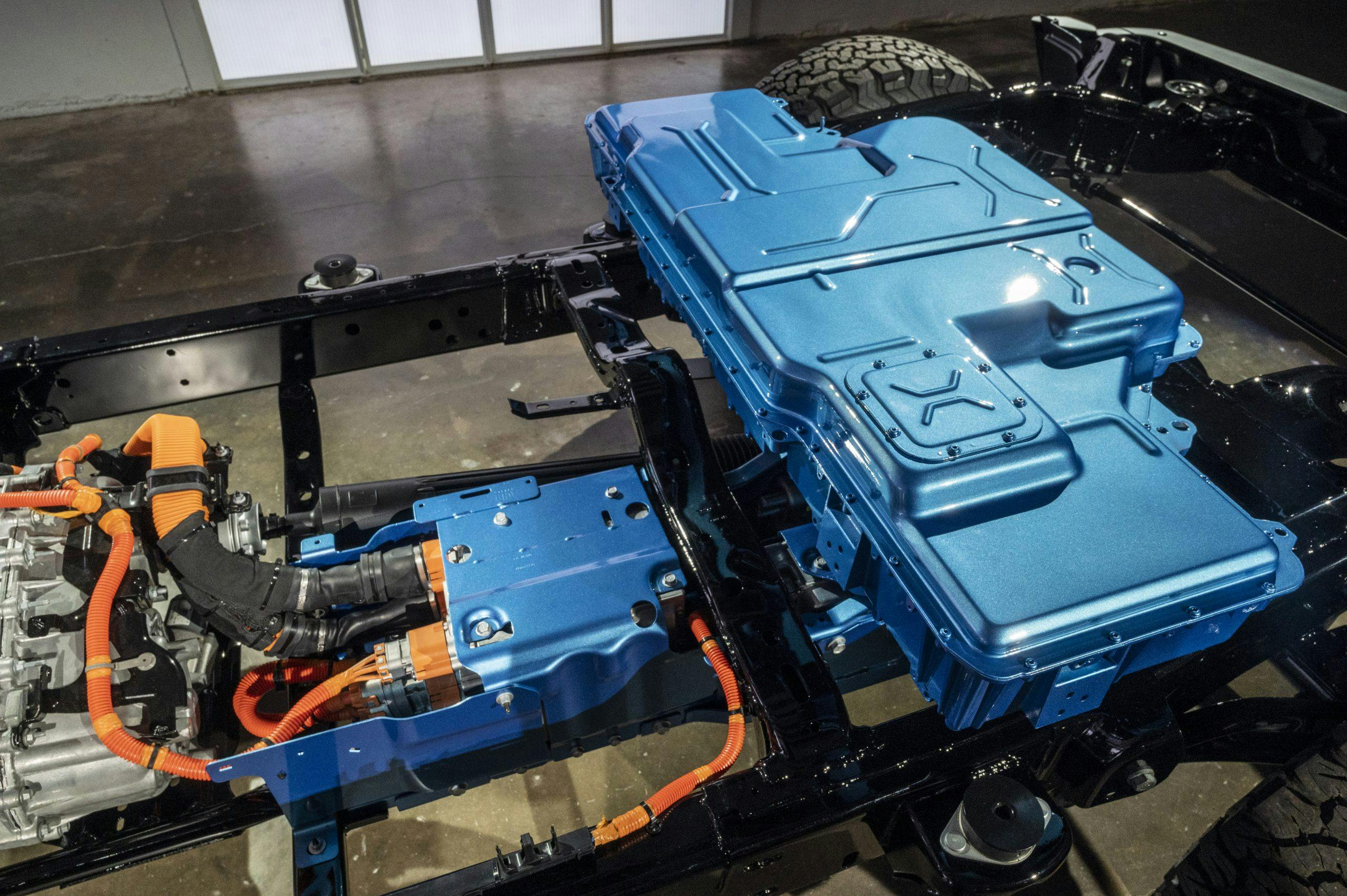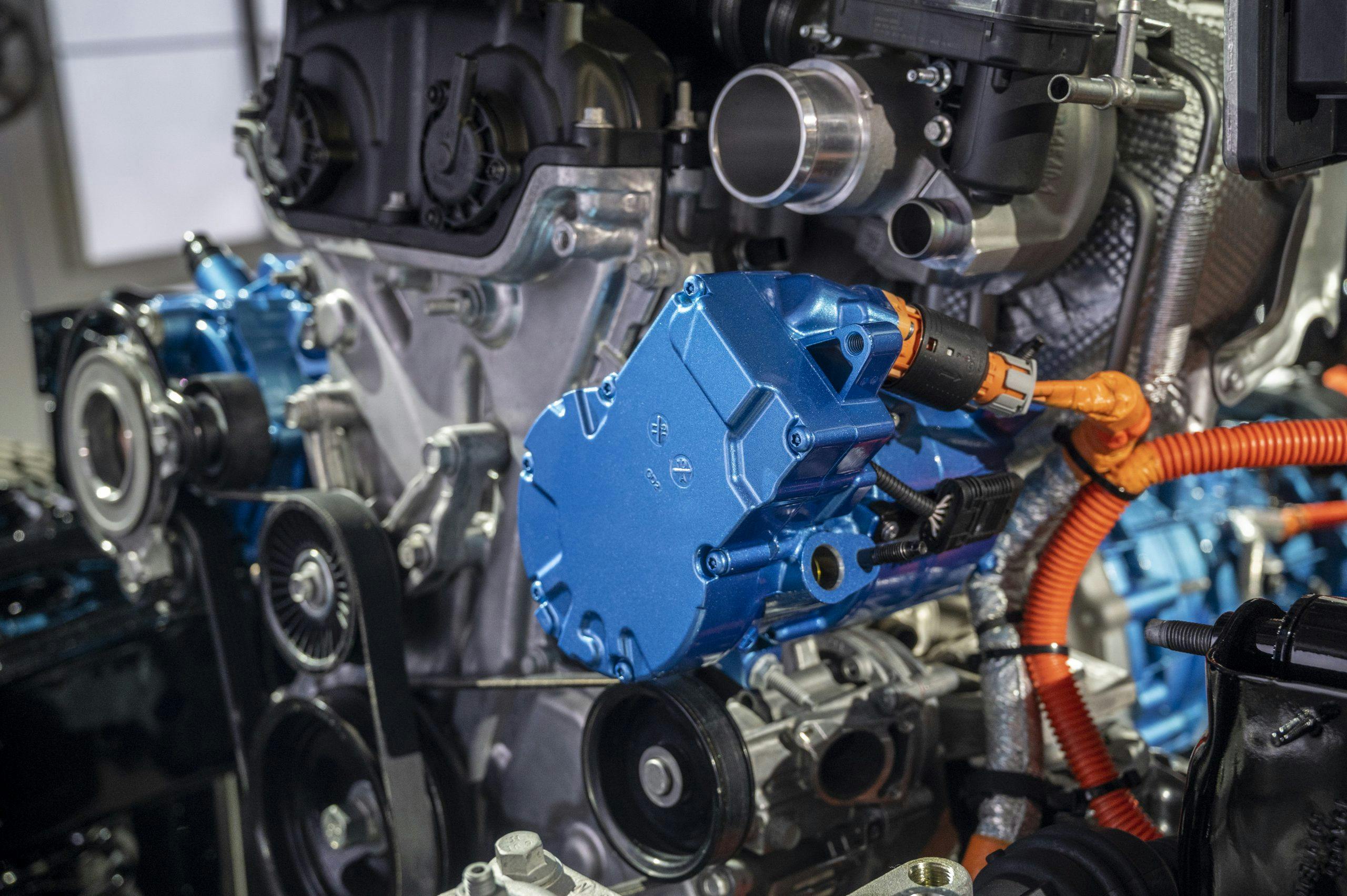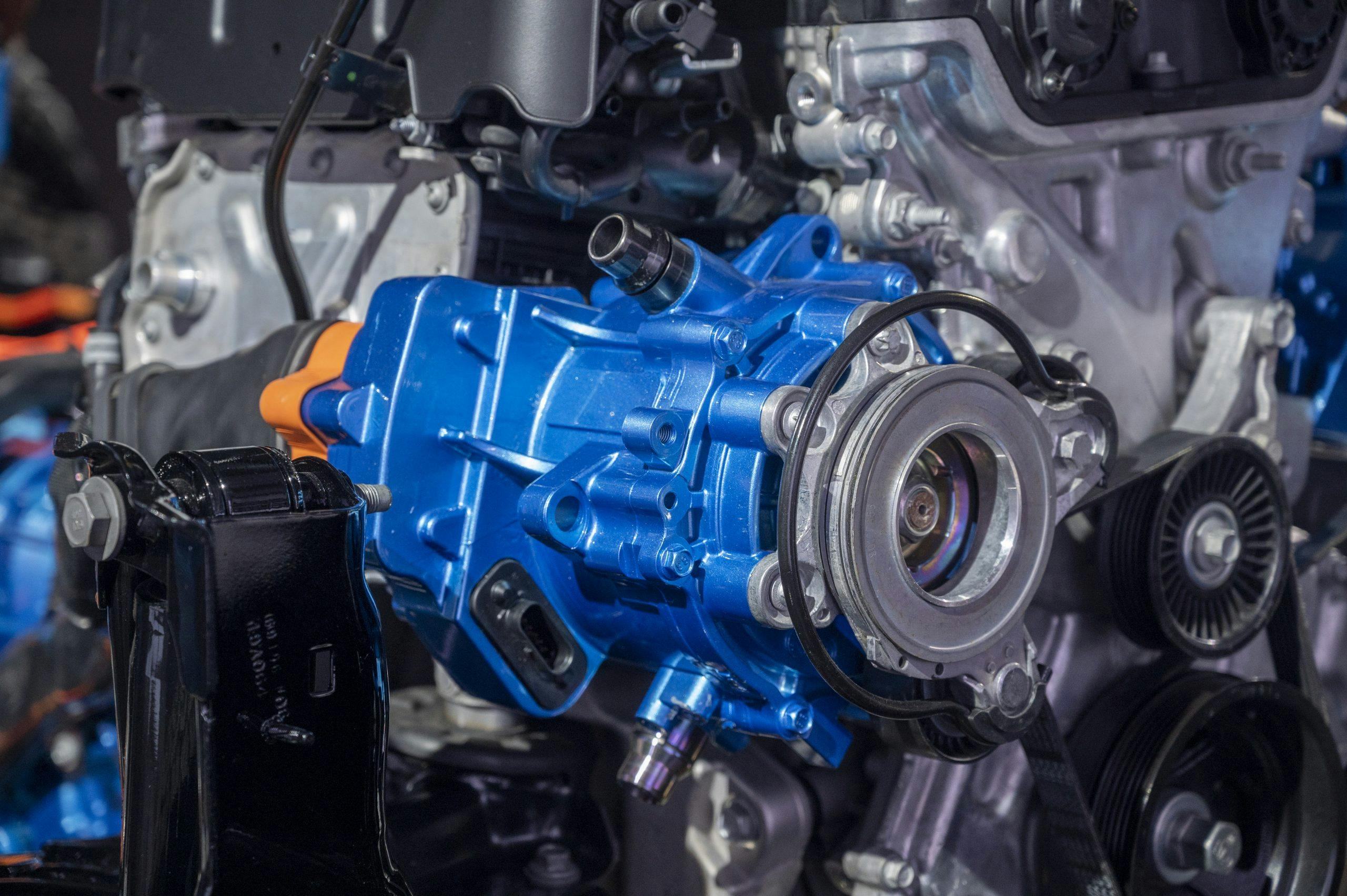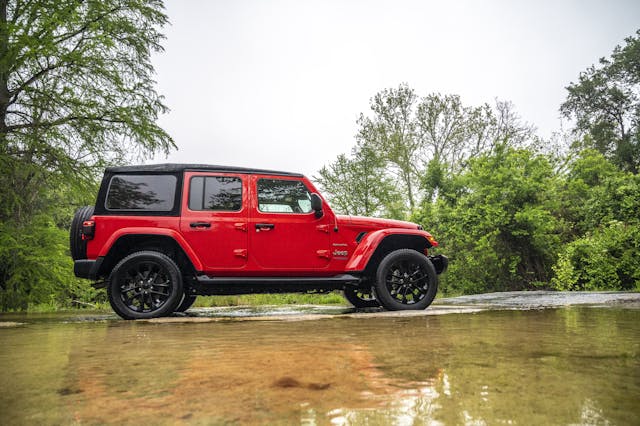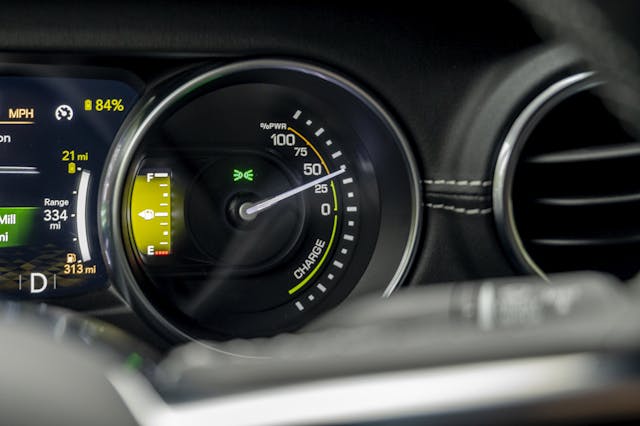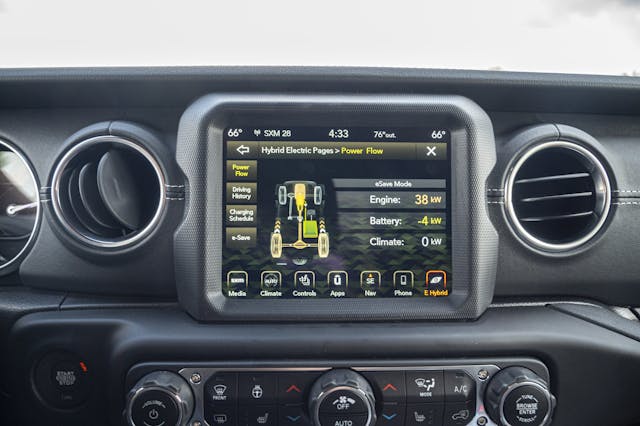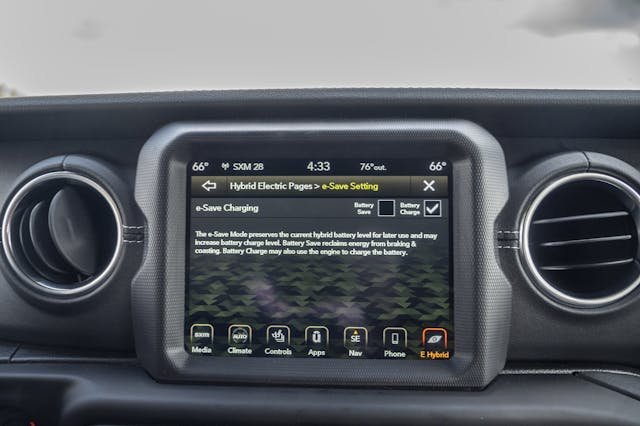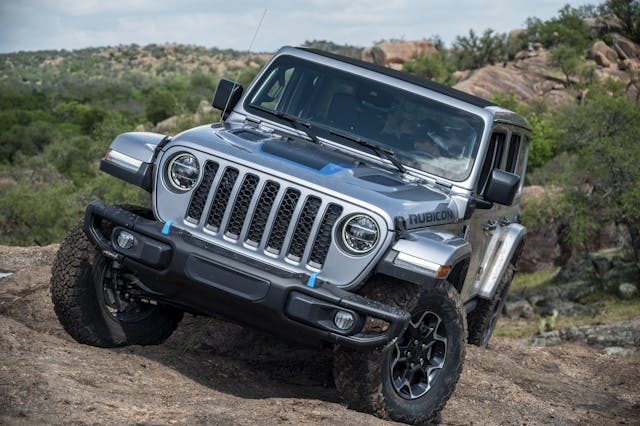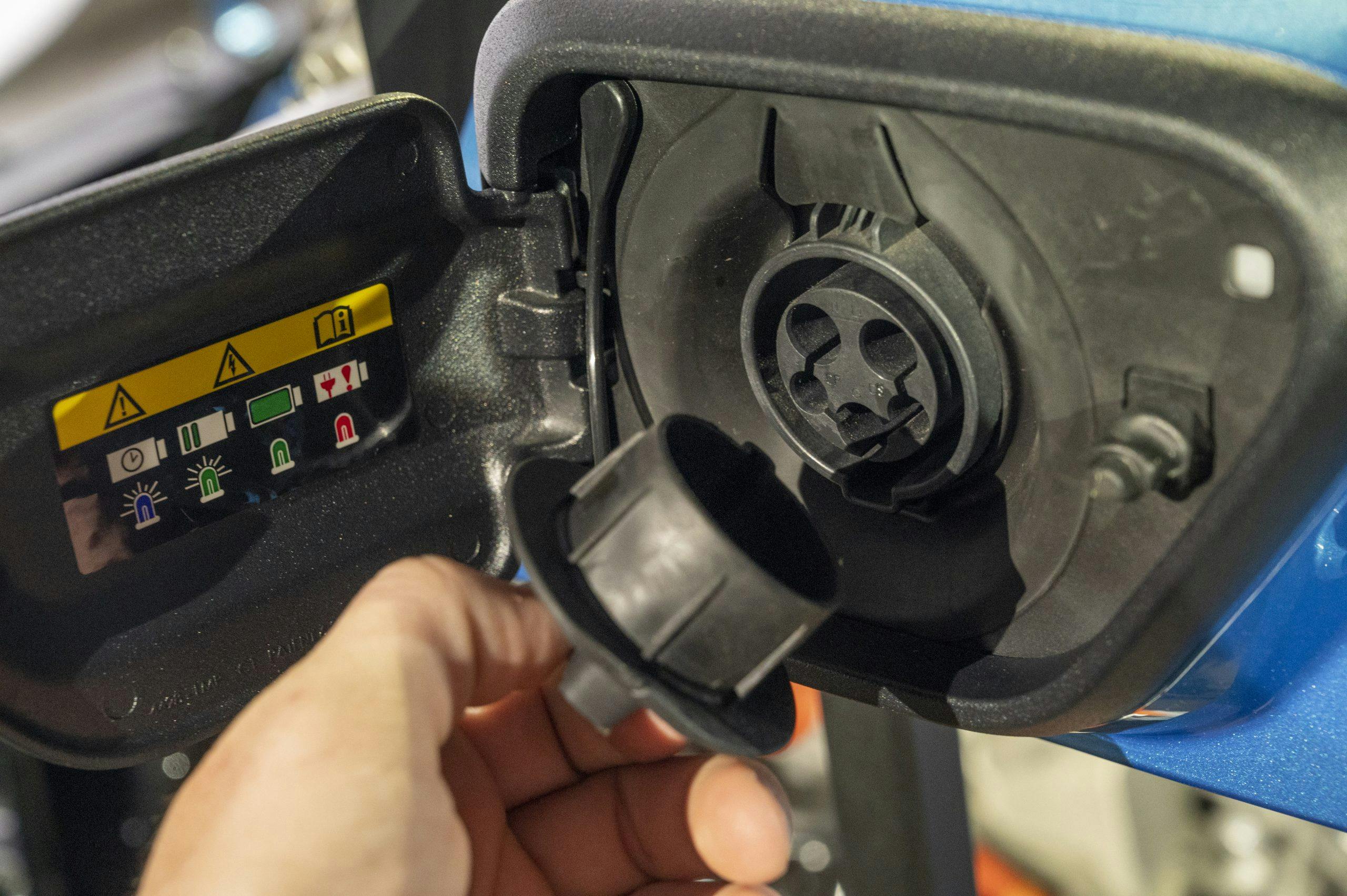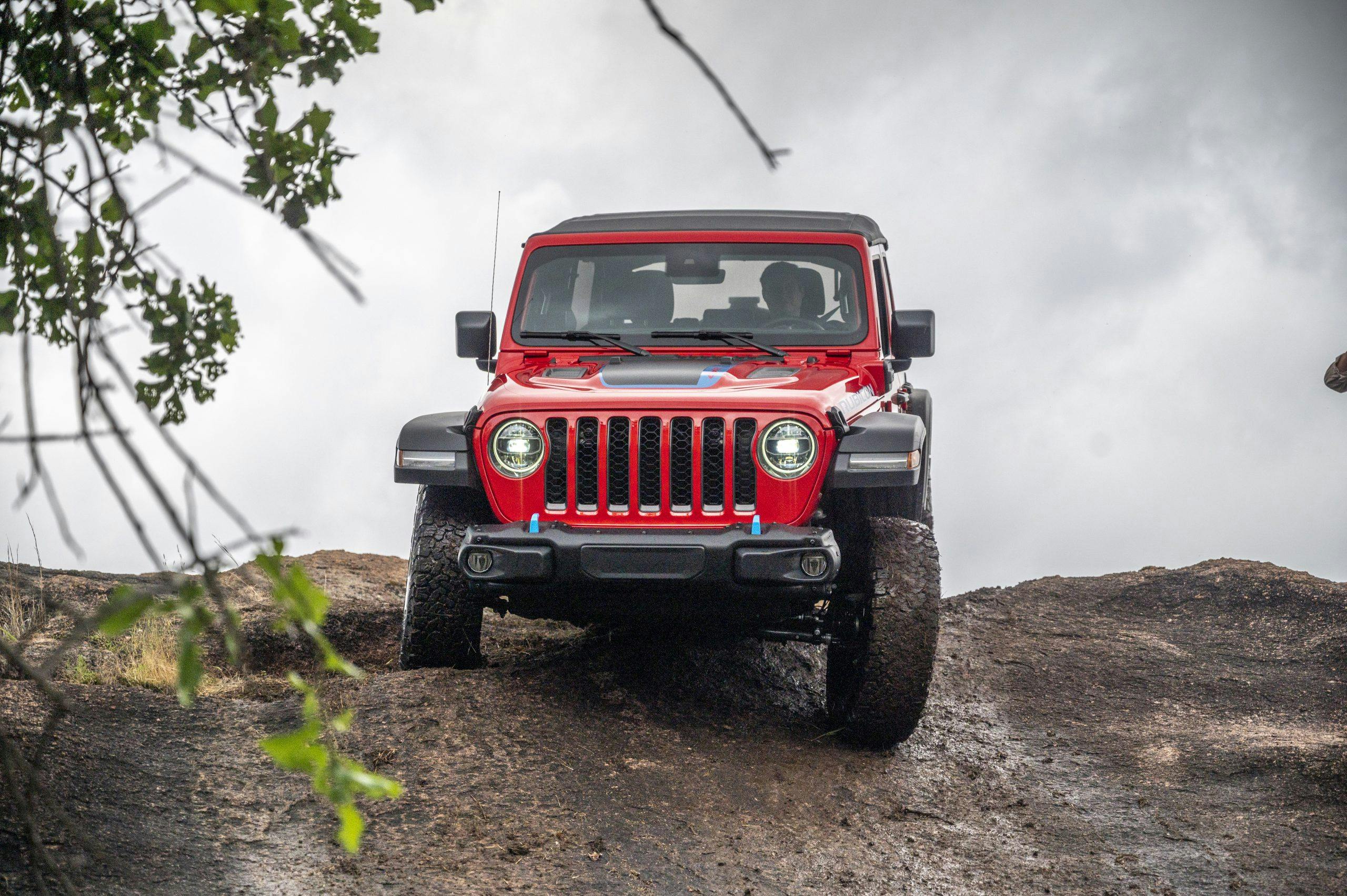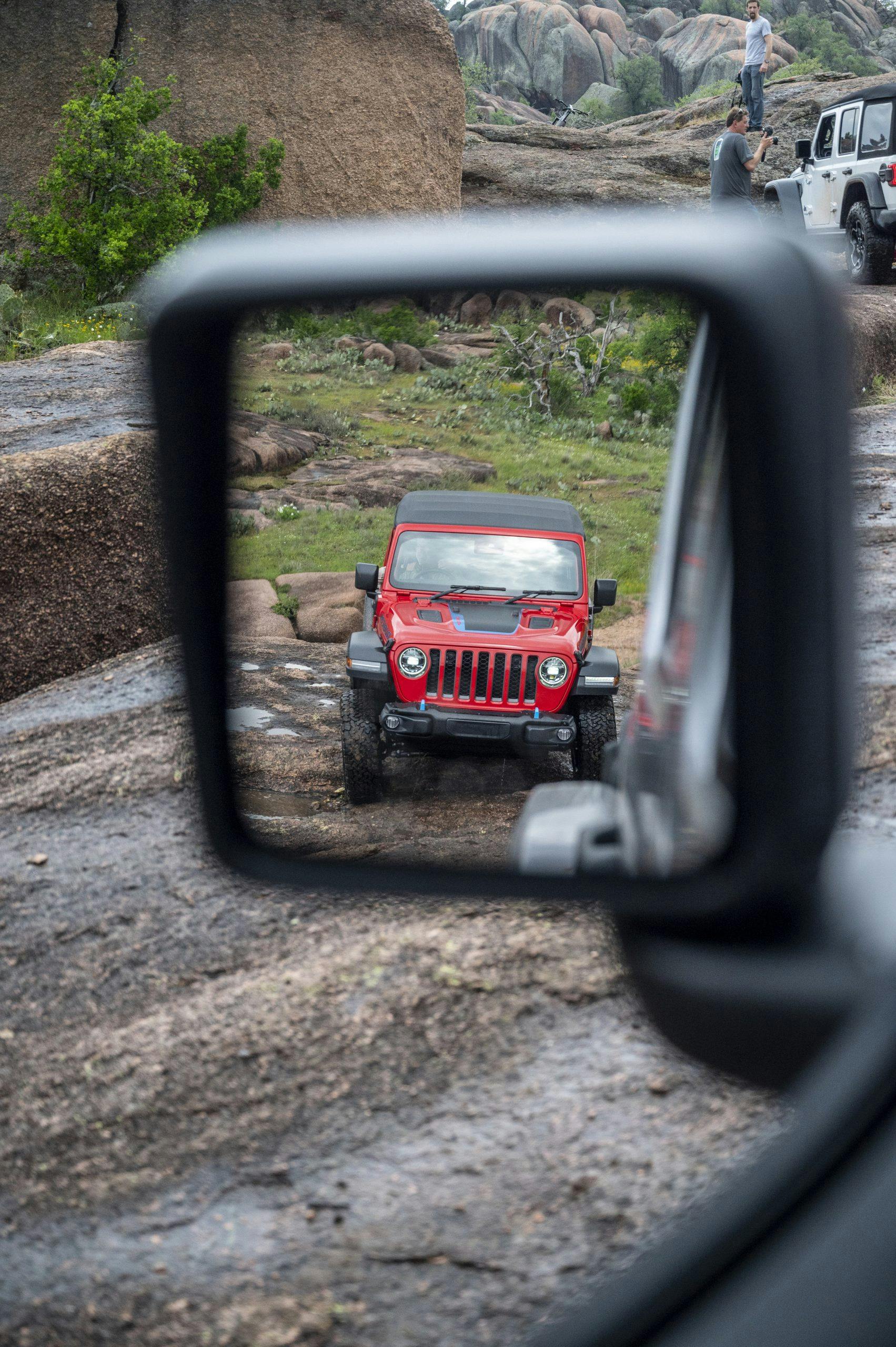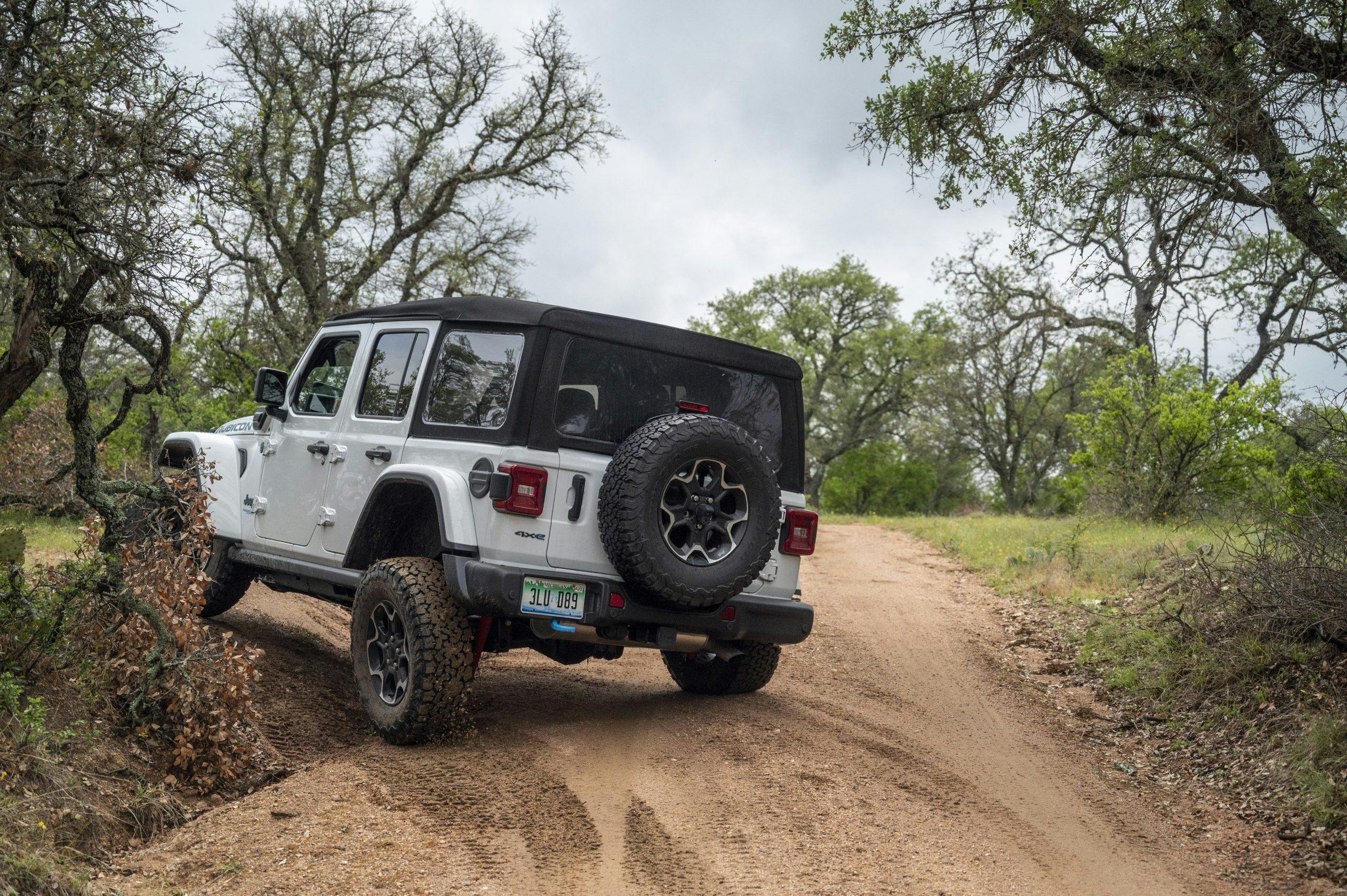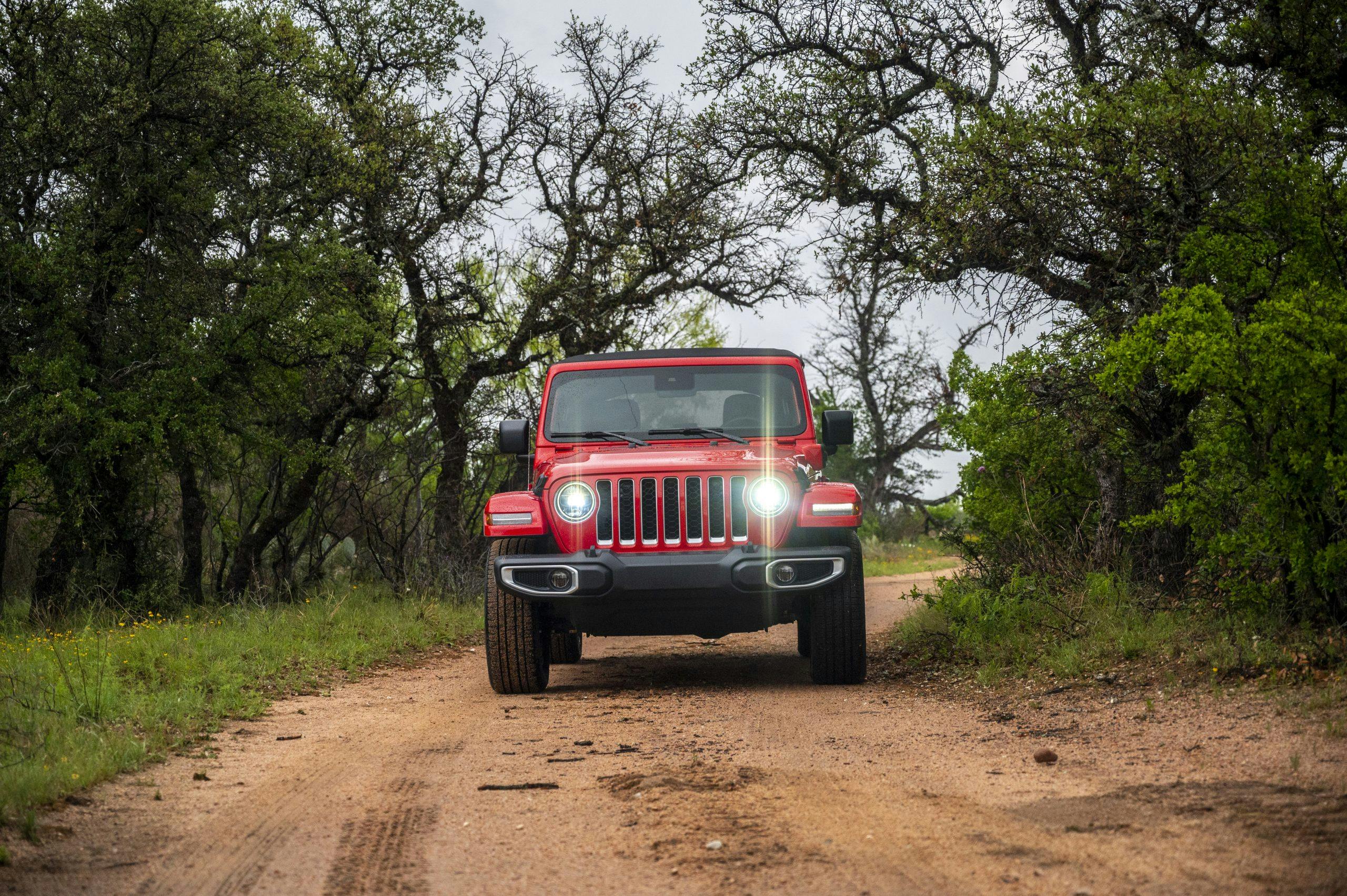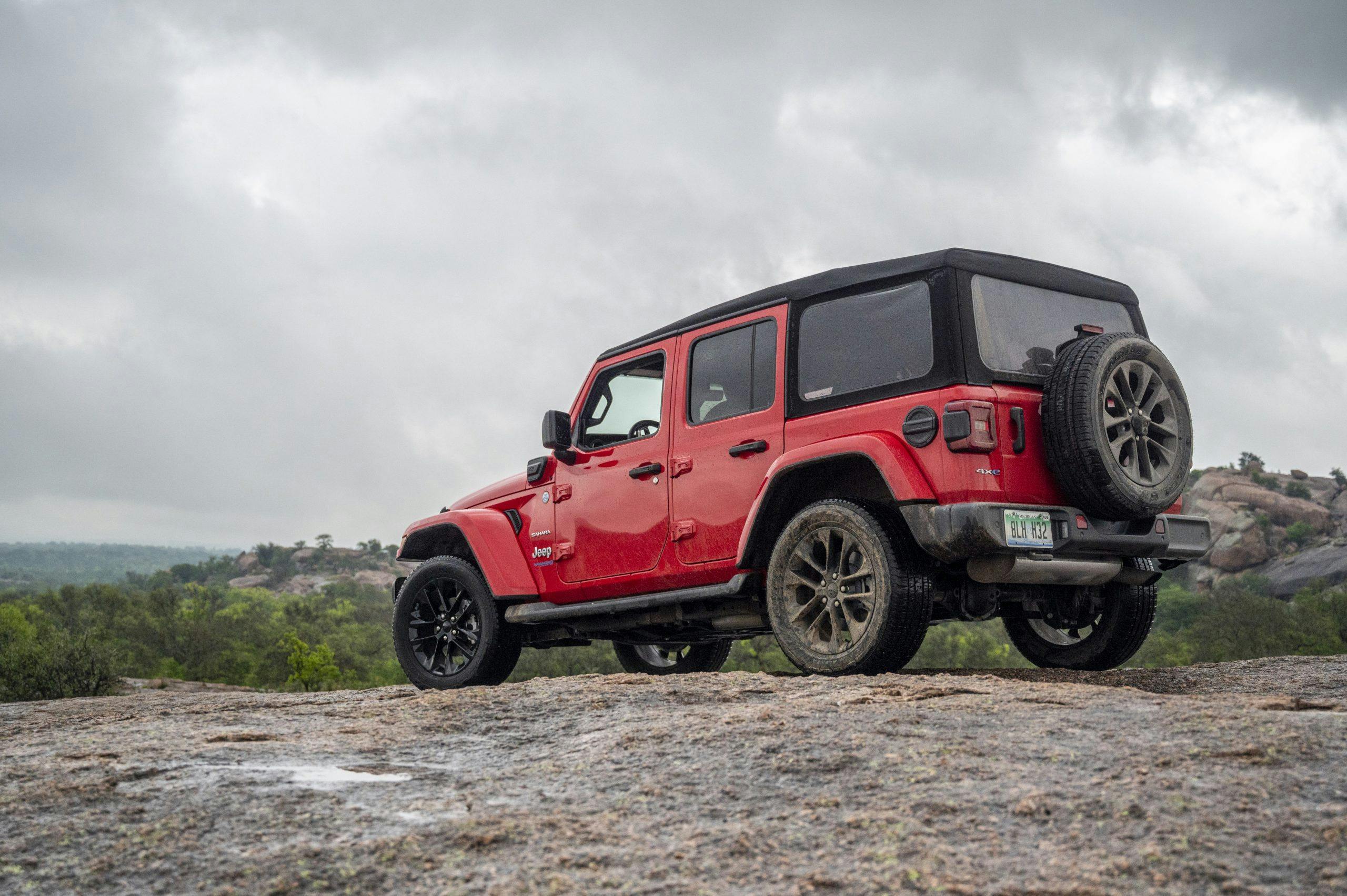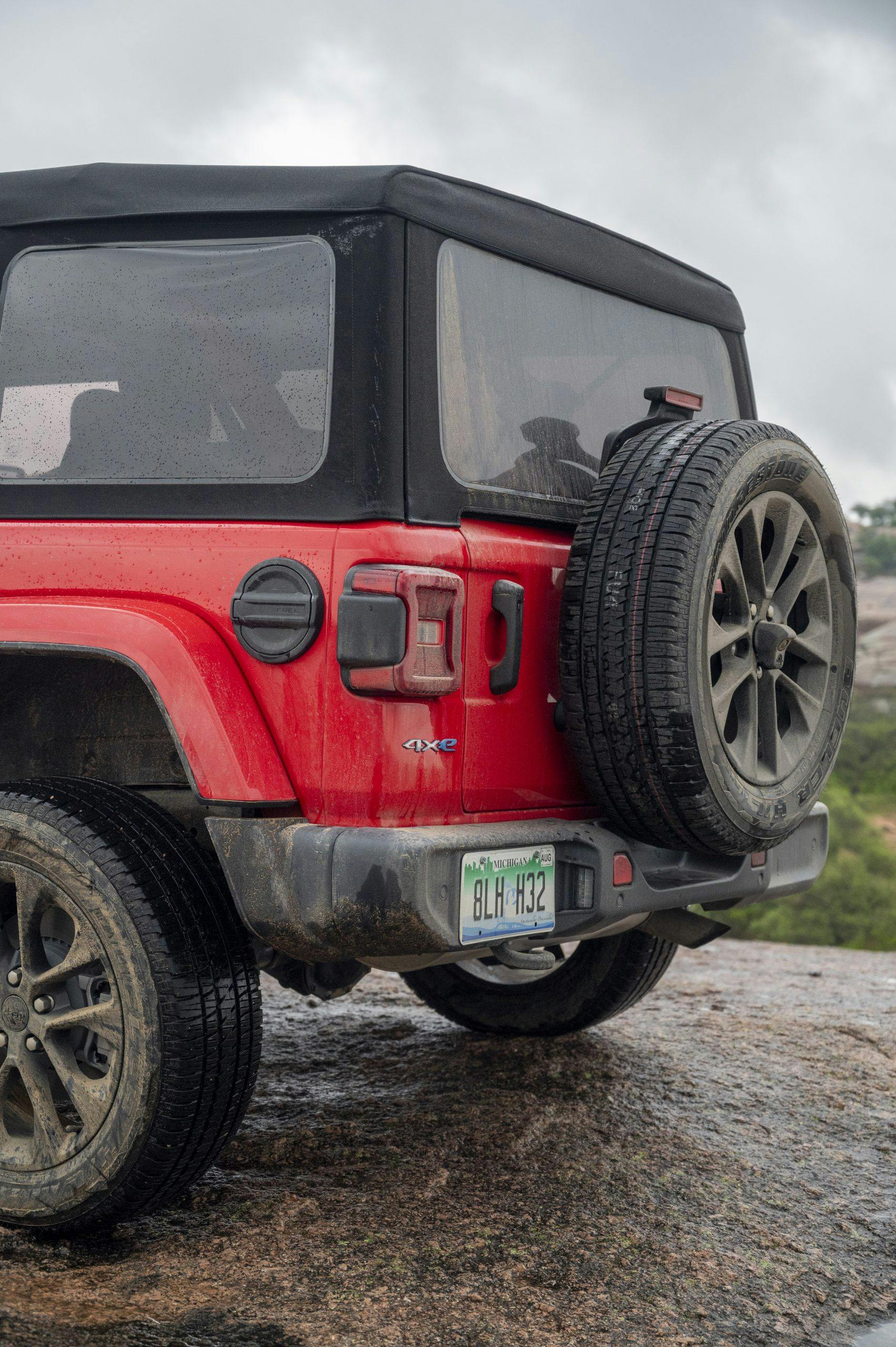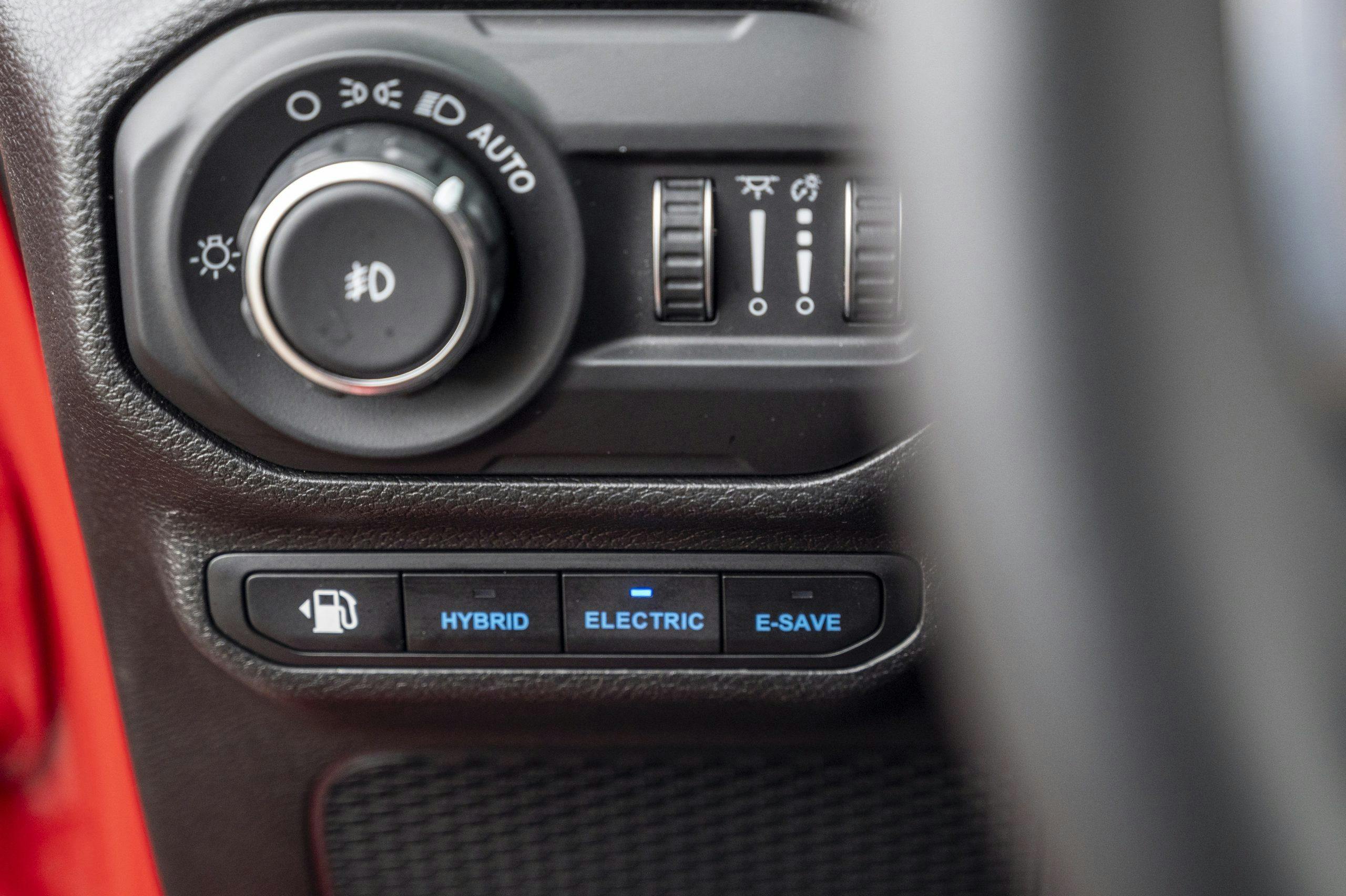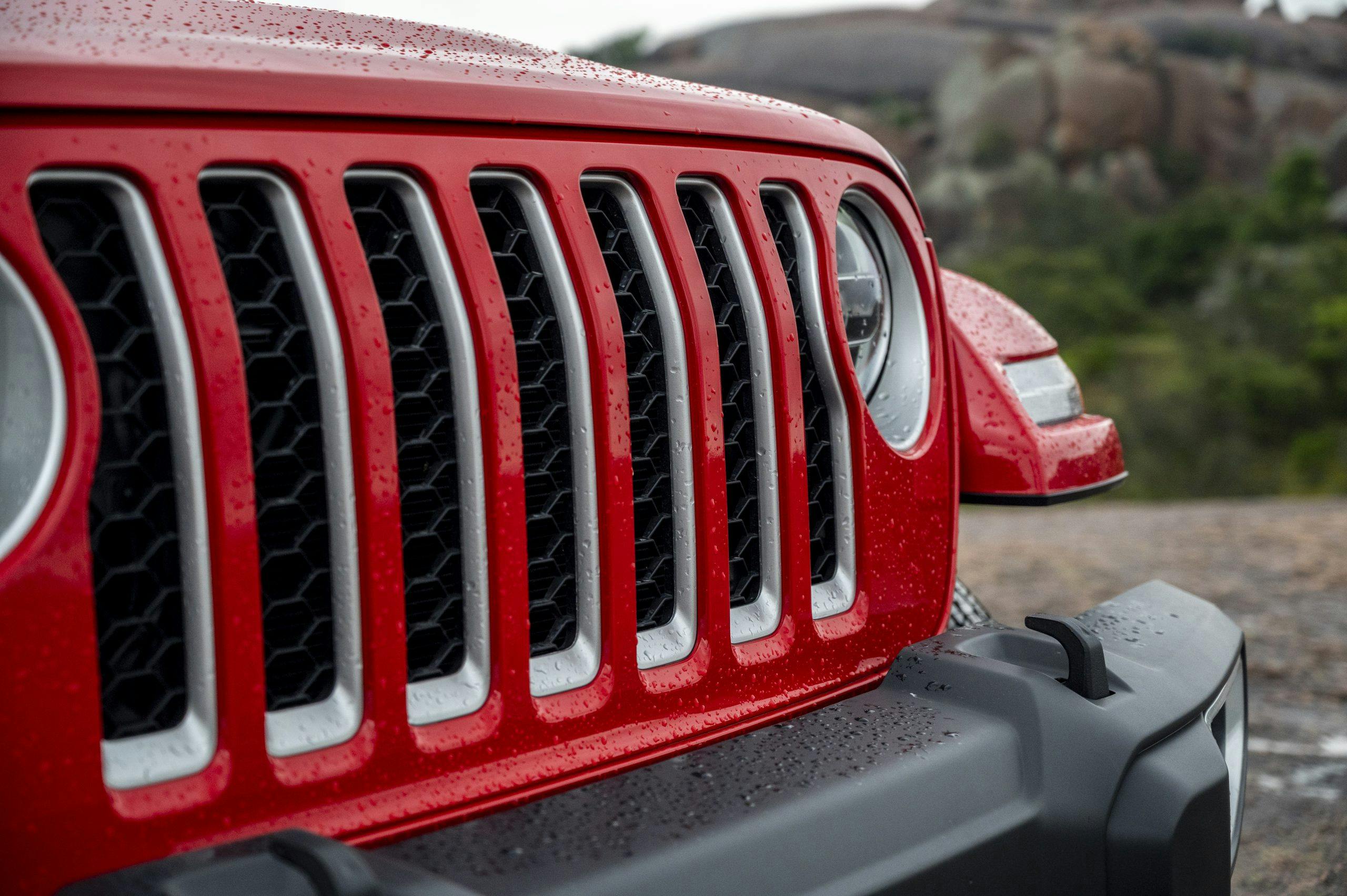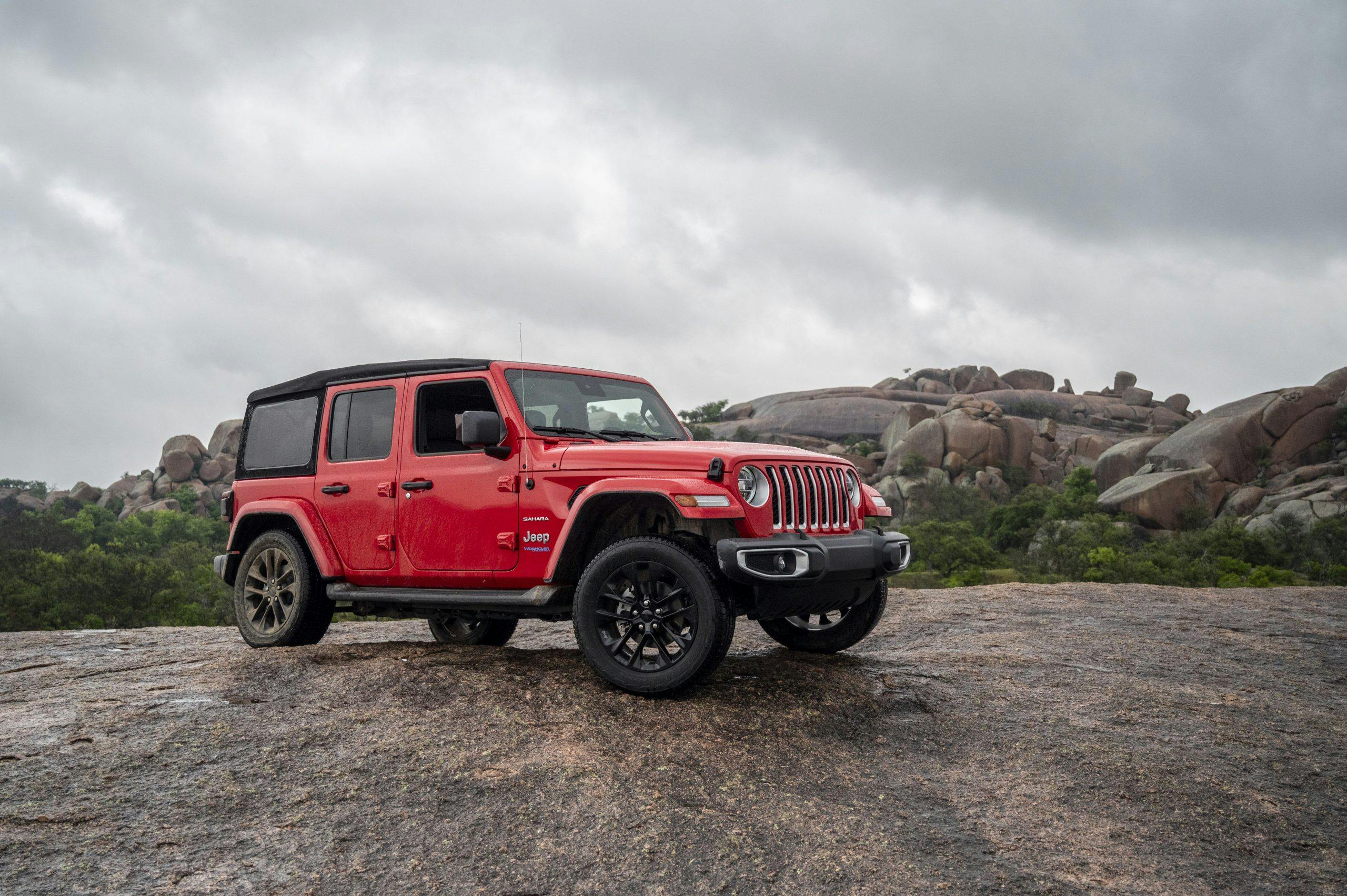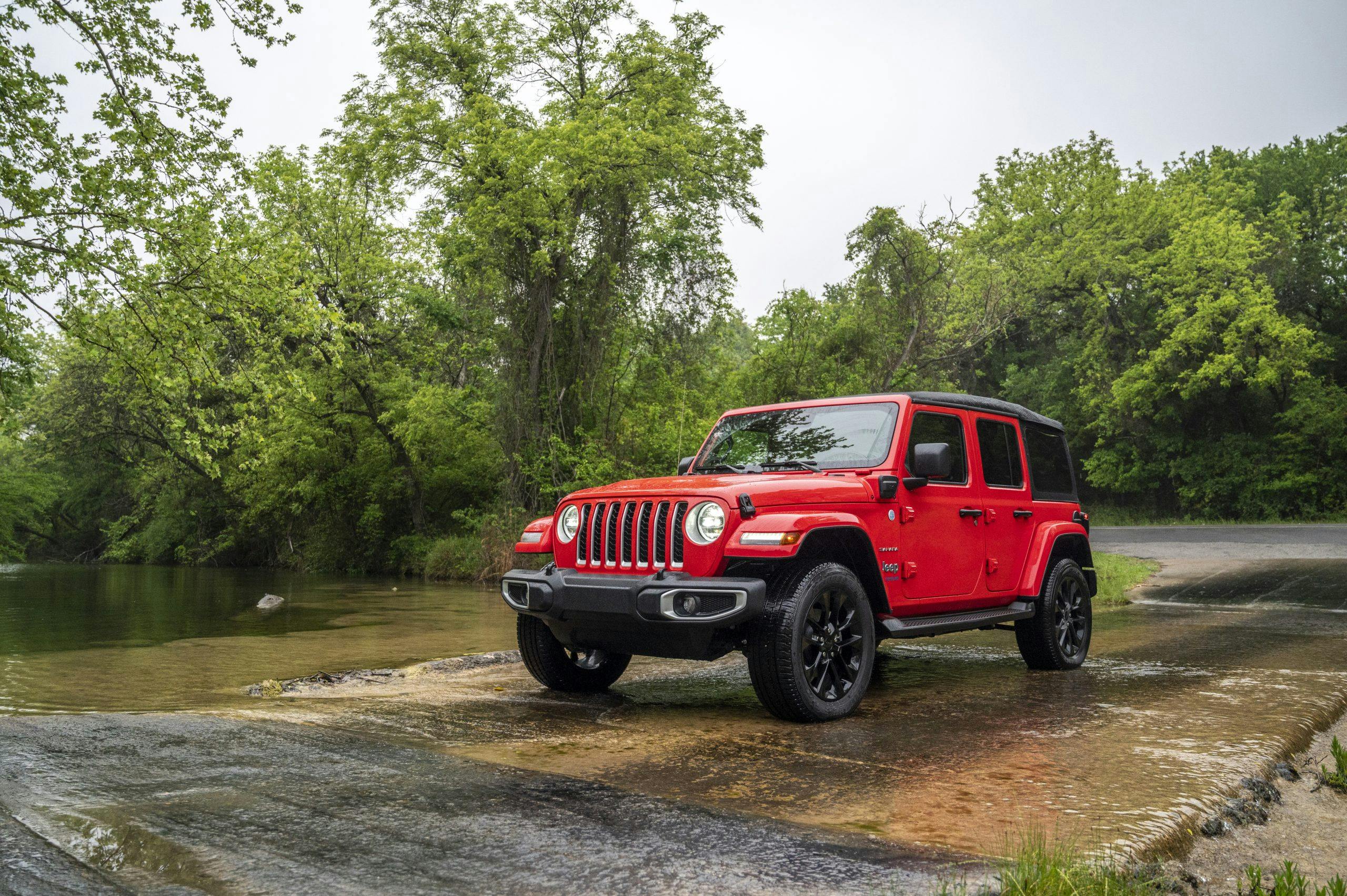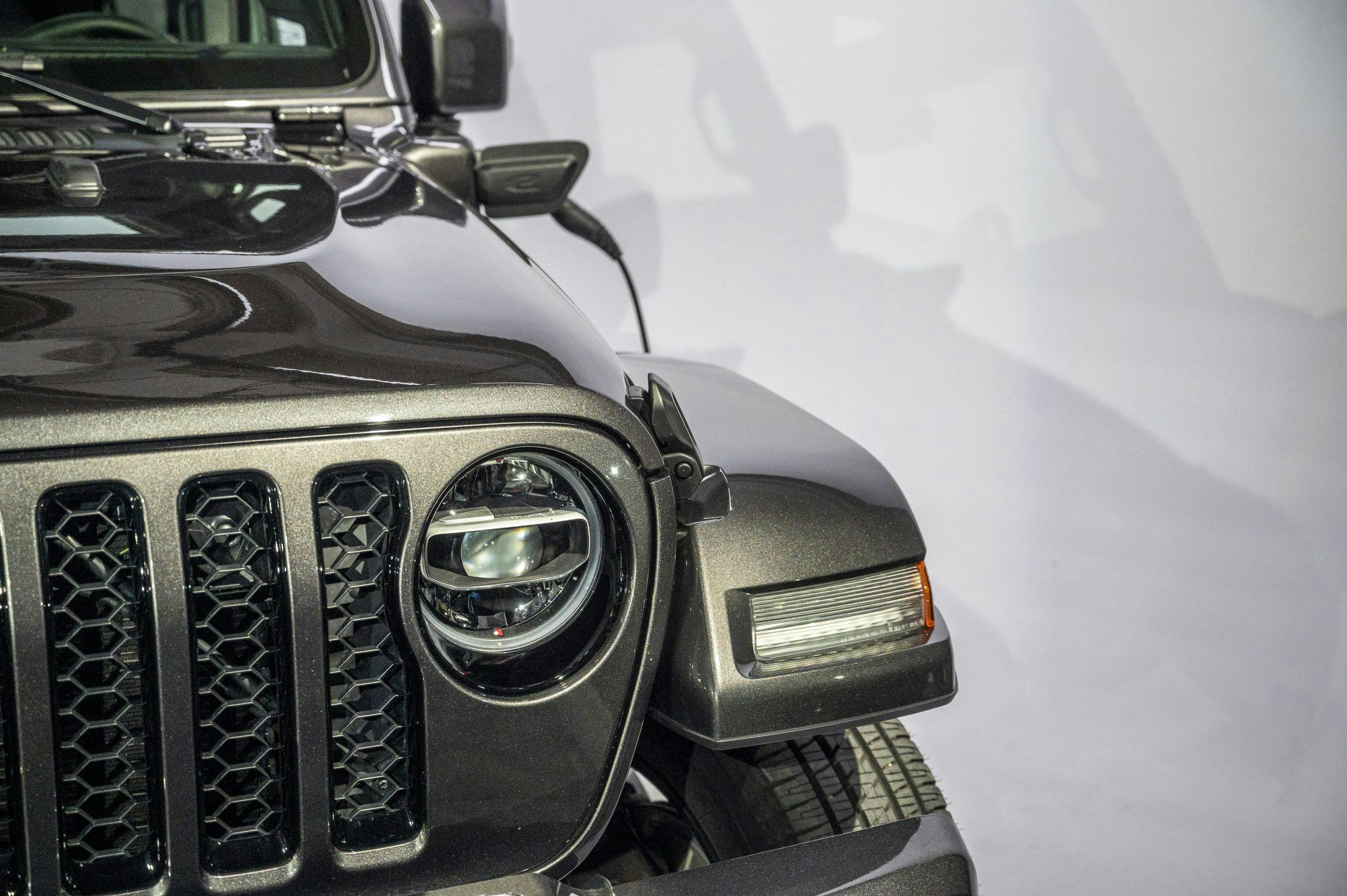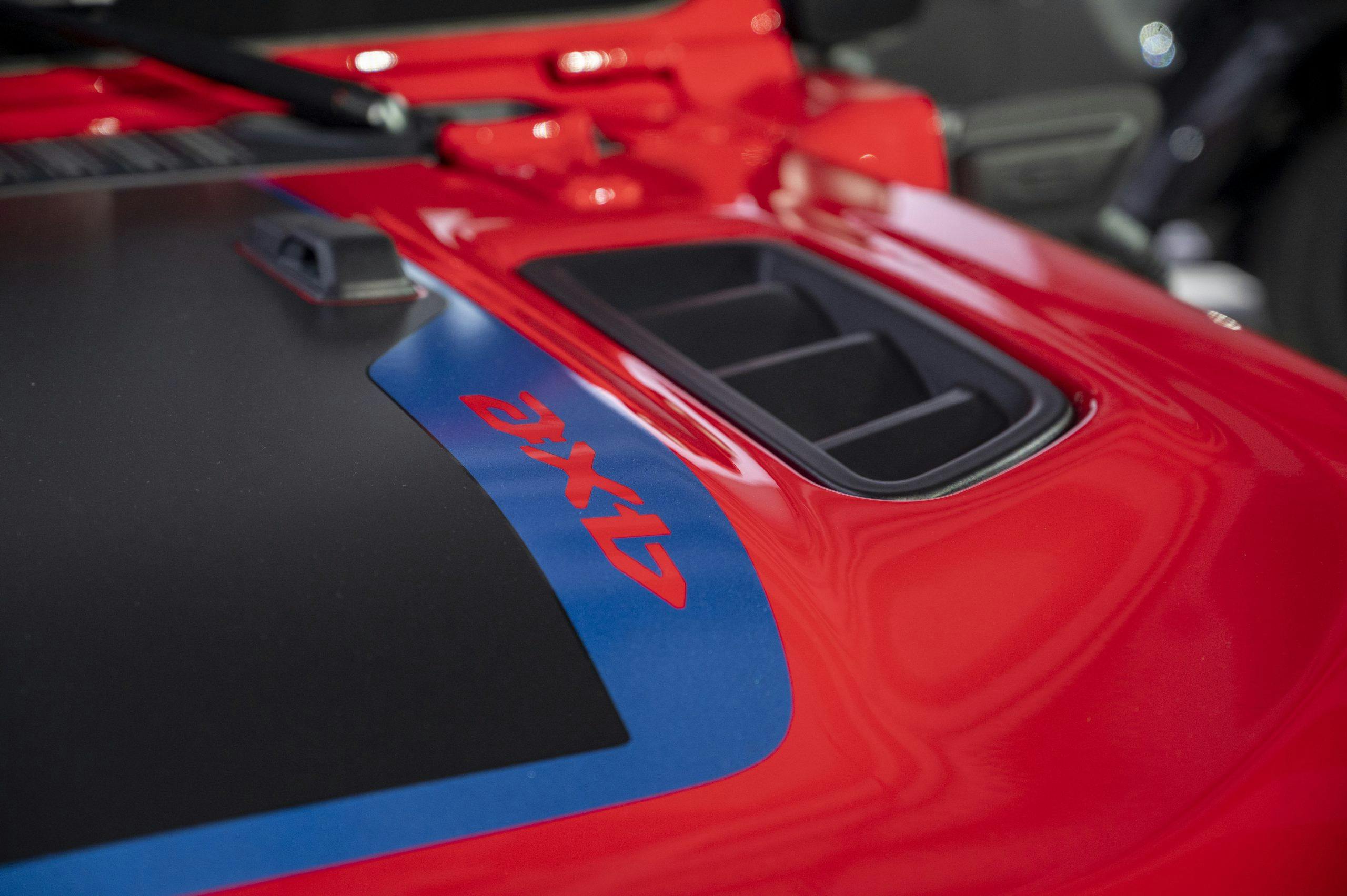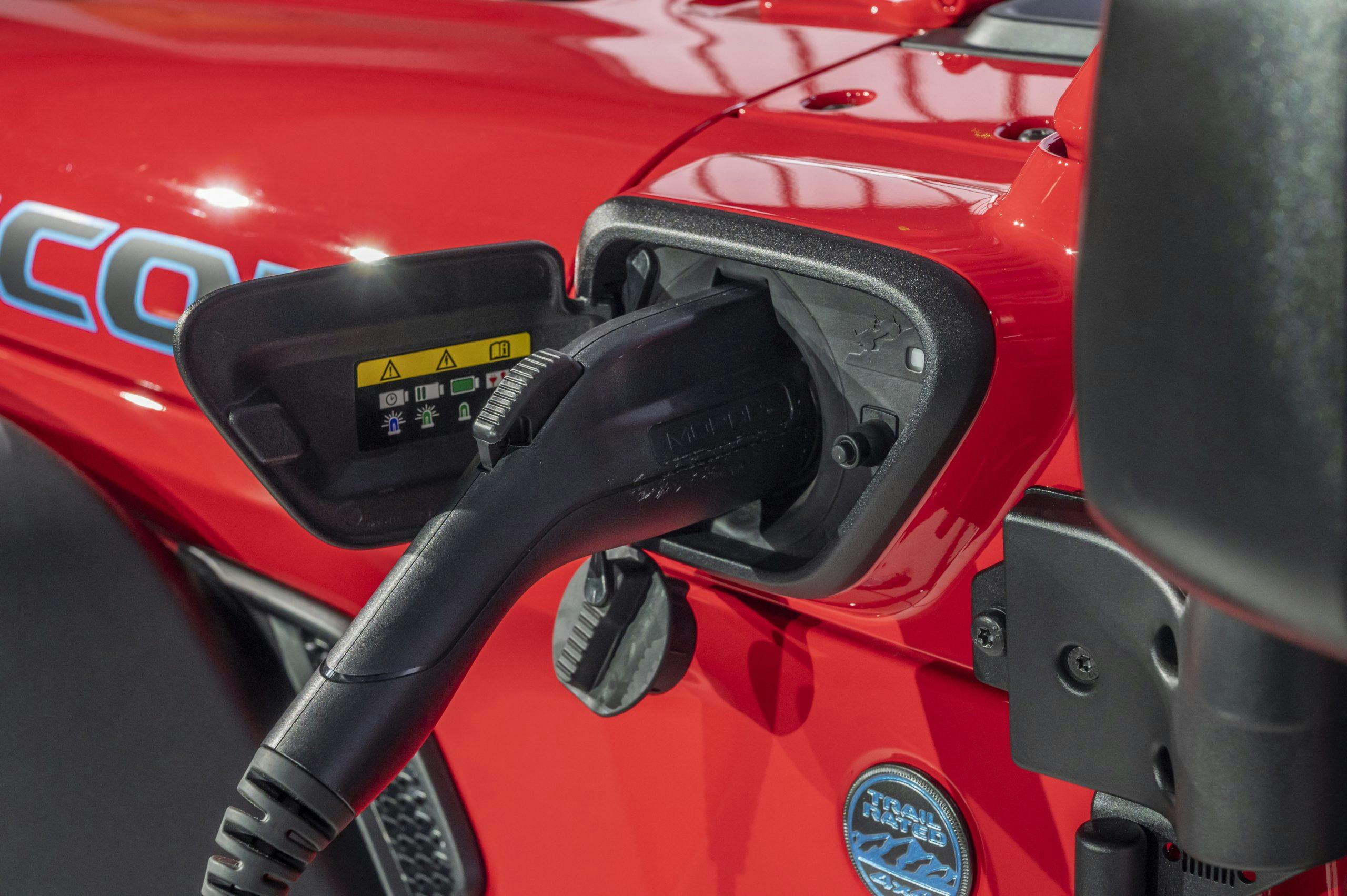Media | Articles
First Look Review: 2021 Jeep Wrangler 4xe
Fuel economy was never part of Jeep’s appeal; even the four-cylinder “CJ” models were as notoriously thirsty as the GIs who had driven their predecessors around England in the 1940s. That has to change, if the brand is going to maintain its enviable cross-cultural appeal. Enter the hybrid-electric Wrangler 4xe (four-by-E). With roots in the eTorque mild-hybrid system that debuted for with Wrangler in 2019, the long-awaited 4xe offers complete hybrid capability, including the option of driving fully-electric, without the gas motor running at all. In a Prius, this means the ability to creep silently through traffic. In a Wrangler? Think off-road.
As Brandon Girmus, senior Wrangler and Gladiator brand manager puts it, “This vehicle represents our first step in our our journey to transform Jeep to the greenest SUV in the world while still maintaining our status as the most capable SUV brand in the world.” As we’ve discussed before, it’s not just the long-legged suspension that defines the modern Jeep, but also the attention to detail that gives off-roaders the right set of tools for success on the trail.
A few changes are required to make a Wrangler into a hybrid. The floor under the rear seat was raised for the battery pack that sits over the rear axle. The rear seats still fold down, but now with a roughly 6-inch step-up compared to the flat load floor found in standard Wranglers. To fit the approximately 2-inch-longer transmission, the frame has relocated cross members and additional reinforcement for the battery and controllers. A 400-volt battery pack drives an electric heater core and A/C compressor, which allows them to operate without the engine burning fuel. Opposite of the fuel tank, resting under the seats on the driver’s side, is the “Super Module,” which retains the DC-to-DC inverter for managing the conventional 12-volt accessories, DC-to-AC power inverters for throttling the motors, and distributing 400 volts for other systems, like the HVAC.
It’s a no-brainer that a hybrid should bump up fuel efficiency, but will it change the experience once tires hit dirt? Inks Ranch in Llano, Texas, served as our proving ground, offering a mix of deep water and lumpy obstacles for exploring how the 4XE felt. Getting there and back involved another few hours of winding through the hill country west of Austin, starting downtown along the Colorado River before winding up some of the city’s busiest streets.
Marketplace
Buy and sell classics with confidence
As civilized as the Wrangler has become, especially since the introduction of the four-door Unlimited, more than ever these off-roaders have fallen into roles as daily-drivers, where a hybrid powertrain is naturally in its element. Combined with the 2.0-liter turbocharged four-cylinder, the hybrid motor inside the 4xe’s eight-speed automatic transmission shares duty with the eTorque-based starter/alternator to bring a powercurve that’s akin to something with a much larger engine—say a 5.7 Hemi Wrangler instead of the belligerent 392—with the electric assist bringing instant low-end torque as the gas engine builds turbo pressure. Once the 2.0-liter is up to speed, the baton is handed over and the electric assist tapers off. In certain situations both systems can be fully engaged, at which point the 4xe produces 375 hp and 470 lb-ft of torque. There’s no waiting around for the powertrain to react—the torque converter you’d find in a conventional automatic is replaced by the electric motor, so its input is direct through a clutch pack and sends that intoxicatingly instant electric twist immediately to the wheels.
Around town, the lethargic acceleration that’s become so synonymous with the Wrangler over its past generations is erased by a consistent 6-second sprint to 60 mph. We observed 22 mpg in a Sahara-trim 4xe on the way to and from the trail, without any conscious effort to hypermile other than selecting max-regen braking.
Jeep’s not anxious to break the fourth wall between the 4xe and passengers who might not know it’s a hybrid. Transitions between gas and electric power are handled smoothly. Three driving modes are available: Hybrid, Electric, and E-save, which gives a driver complete control to manage the state of charge for the frame-mounted battery. The first two modes are fairly standard with hybrids, but that third one is unique. It hands the driver the choice of whether to conserve the battery for later or to focus on charging it while driving at the expense of the gas engine’s efficiency, which has to work harder to provide more charging current on command while simultaneously reducing its dependence on the motor in light-load situations. In either case, we saw around 22 mpg in mixed driving and just over 20 miles of all-electric range, as advertised.
Once we got into Inks Ranch though, thoughts of fuel efficiency vanished in the presence of the 4xe’s nearly-silent electric mode. As with the fully-electric Magneto concept, Jeep spent an immense amount of time dialing in the throttle response for low-speed use, ensuring that the instant torque isn’t too willing to blow the tires off. The finesse that’s allowed is practically unmatched by a conventional powertrain. Driving a stick-shift off-road, you have to balance it on the clutch during off-road maneuvers; with an automatic, you have to account for the response time of the torque converter. The 4xe? It has neither problem.
Oh, and it’s quiet. The 4xe brings a two-fold change to the off-road experience, both enhancing immersion into the land we were wheeling across and the perception of the vehicle’s progress over trickier sections. The former effect is obvious; removing a layer of engine noise means the birds and the bees can speak over the usual valvetrain harmony, hurricane-force fans, and growling exhaust. The latter invites a new way to drive. Being able to hear the tires communicate is something of an unsung truth about EV drivetrains. You can’t help but love something like a Wrangler 392 that barks through gears, but the 4xe serves up a precise set of audible cues for all four tires and their interaction with the trail.
The Catch-22 of the Wrangler? Its suspension can be so capable that it masks much of the chaos going on at the tire. Hearing the shoulder knobs of one corner clicking along the edge of a shelf, while another tire sounds like dragging wet sandpaper across the rock thanks to the last mud hole, communicates a sense of traction to a driver with details that would normally be drowned out by the extra-curricular noise of a typical combustion engine—especially with the higher RPMs often used in low-range.
What that experience is worth to a Jeep buyer has yet to be proven, but the $7500 federal tax credit for the 4xe’s plug-in capabilities eliminates most of the mark-up. For Sahara models, the 4xe is $47,995 while the “normal version” is $39,170 (a difference of $1325 after tax credit). The Rubicon 4xe rings in at $51,695 over its standard base price of $42,720 ($1475 difference post tax credit), while the upper-trim High Altitude actually discounts the overall purchase price by $3760, bringing its MSRP from $50,075 to $53,815 before tax credit. Add a $1495 destination charge to each of these numbers.
The JL-generation Wrangler has something for almost everyone. Three body styles, multiple powertrains, a diversity of suspension and tire packages. Some of us only have eyes for the storming 392, but others will have an ear for the quiet, subtle pleasures of crawling up the Rubicon with just an electric hum and the chorus of four tires allowed to sing a cappella for the first time.
Highs: Unparalleled, enhanced off-roading experience, at least until the market catches up. Opens the door to new buyers without sacrificing capability. Useful control over the hybrid experience.
Lows: Losing cargo volume to the battery in an already space-limited cabin, plus approximately 700 pounds of additional than a comparable Wrangler model. Sahara’s base shock package left much to be desired over rough roads with nervous body motions.
Summary: A tease of an electrified future that stands as a capable hybrid, today, on its own four feet.
